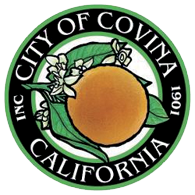
Planning FAQ
Check out our public GIS Viewer (online Map). Type in the property address to find your property’s zoning. If you need further assistance, please contact Planning at (626) 384-5450.
Instructions for how to use the online GIS map can be found here
Visit the Los Angeles County Assessor to view your property on a parcel map with approximate property line dimensions. Or, you can hire a professional land surveyor to determine the exact dimensions and location of your property lines.
Generally, a residential zoned property may have a wall or fence 5 feet high maximum in the front yard and a maximum of 8 feet in height in the side and rear yards. When within a safety sight line, the portion of the fence above 30 inches in height shall be of an open work design. For additional requirements refer to CMC Chapter 17.71 Walls, Fences, and Screening in the Zoning Code.
A legal non-conforming property is a property that was legally constructed, but does not conform to current code provisions and standards. This means that certain additions and modifications to the property will have to conform with the current zoning code. Example: Legal non-conforming garage with a 1-foot rear setback is being remodeled to a 2-story, 3 car garage. If this modification were to be approved, the new garage would have to meet current zoning code setbacks. Therefore, the 1-foot rear setback would no longer be allowed.
Yes. Under Planning, a Wall and Fence approval is required for all fences and walls regardless of height and location. Once you receive your Planning Approval, you must then obtain a building permit by the City Building Official. Additionally, if you are proposing a retaining wall or constructing a wall greater than 6 feet in height, structural plans are required for a building permit.
Yes. A Property Owners Agreement for Shared Block Wall/Fencing is required prior to obtaining Planning Approval.
Accessory Dwelling Units (ADU)
Frequently Asked Questions
IMPORTANT: Before applying, please verify the project address jurisdiction to determine if Covina is the appropriate agency to process your request. Any Covina address that is within “LA County” Jurisdiction must submit directly to the Los Angeles County Department of Regional Planning.
Yes. All accessory dwelling units require a covenant agreement, per Ordinance No. 22-06, passed, approved, and adopted May 17, 2022.
Per ADU Ordinance No. 22-06, ADUs greater than 800 square feet shall comply with newly adopted ADU design standards. Refer to Covina Municipal Code Section 17.69.040. The accessory dwelling unit shall provide complete and independent living facilities.If there is an existing primary dwelling, the total floor area of an attached ADU shall not exceed 50% of the existing primary dwelling. For detached ADUs, the total floor area shall not exceed 1,000 square feet.
- JADUs are units limited to 500 square feet in size that are contained within the walls of an existing or proposed single-family residence. One JADU is allowed on a lot with a proposed or existing single-family home.
- A JADU must have a separate entrance from the main entrance of the residence, and must include an efficient kitchen with cooking appliances and a small food preparation and storage area.
- In contrast to ADUs, owner occupancy of the JADU or the primary dwelling is required, unless the owner is a government agency, land trust, or housing organization.
- A deed restriction must be recorded to prohibit separate conveyance and restrict the size and attributes of the JADU.
- No additional parking is required for a JADU.
- An efficiency unit is one not less than 220 square feet in size.
Maximum building height shall not exceed 16 feet in height when it is located at least 4 feet from a side and rear property line. ADUs greater than 16 feet in height, (i.e. detached two story ADUs, a second-story ADU above a garage, the addition of a second-story ADU to an existing single-story residence, the addition of an attached two-story ADU to the primary residence, or any combination thereof) shall be permitted within the primary residence “buildable area,” as determined under CMC Sections 17.14 and 17.26 residential development standards. Single-story accessory dwelling units shall meet all the minimum 4-foot side and rear yard setback requirement. Accessory dwelling units within existing structures are not subject to additional building setbacks.
When a garage, carport, or covered parking structure is converted or demolished to construct an ADU, replacement parking of the lost off-street parking is no longer required.Other development standards, such as limits on lot coverage, floor area ratio, or open space requirements, cannot be applied to the extent they would prohibit an ADU that is at least 800 square feet and 16 feet tall, with a 4-foot rear and side yard setback.
A detached ADU may be combined with a Junior Accessory Dwelling Unit (JADU) that complies with the requirements described above, such that two additional units (one detached and one attached) are allowed on the lot. Given the size limitations, this means that a property could have a 500-square-foot JADU attached to the house and an up to an 800-square foot detached ADU.
Detached ADU sited within four to one or greater slopes, whether upslope or downslope, or within a High to Very High Fire Hazard Severity Zone (FHSZ) designation from Los Angeles County Fire Department, shall meet the following requirements:
- May encroach into the four to one ( 4: 1) or greater slopes by a maximum distance of 6 feet;
- Require Planning review and Los Angeles County Fire Department Review;
- Provide a minimum 10-foot fire defensive zone around the ADU (Defensible space is the buffer you create between a building on your property and the grass, trees, shrubs, or any wildland area that surround it. CALFIRE);
- Comply with construction requirements in the California Building Code and California Residential Code that are specific to the wildland-urban interface fire area.
- Roof material shall be tiles, slate or imitation thereof. Where the roof material for the main house consists of composition shingles, detached ADU can include the same material. If composition shingles are used, 40-year or higher grade architectural dimension shingles shall be used.
The first step is to submit your project to the Planning Division for review and approval. Any applications submitted to Building & Safety without a Planning Approval Clearance will be rejected and referred back to the Planning Division. “Building Permit Only” categories must still be submitted to Planning for verification of compliance before proceeding with Building & Safety.
Step 1: Review the Frequently Asked Questions Above and review the ADU Checklist
Step 2: Complete the ADU application form and assemble a submittal package as directed in the ADU application form. Need help determining what is needed on the plans? refer to sections 2 and 3 of the Site Plan Review handout.
Step 3: Submit items from Step 2 to Planning-Submittal@covinaca.gov or in person at the Planning counter (Mail is okay).
Please allow up to 15 days for planning staff to make a determination and to follow up with further instructions. For mail in option, allow up to 15 days after confirmation of receipt of package. If mailing your package, mail with attention to: Planning Division, City of Covina, 125 E College Stree, Covina, CA 91723.
Review the “conditions of Approval” section located on your Planning Approval Clearance document. As a requirement of submittal for building plan check, the Planning approval and the approved site plan, elevation, and floor plan shall be included as part of your submittal package. Typically these documents are located immediately after the title/cover page of the construction plans and are noted in the index on the cover page. See the steps below. Questions regarding Building Plan check can be inquired with the Building & Safety Division at 626-384-5460.
Submitting to Building & Safety for plan check:
Step 1: Review the Planning Approval Clearance provided to you by your case planner and integrate the Clearance and the stamped-approved site plan, floor plan, and elevations into construction plan set.
Step 2: Review the Building & Safety ADU Handout, Residential Submittal Checklist , and plan check process page.
Step 3: Prepare required documents according to Steps 1 and 2, and complete the Building Permit Application Form, complete the Address Request Form and provide either homeowner, contractor, or agent of contractor information.
Step 4: Submit prepared items in Step 3 to the Building Safety Division for Plan check.
* This page was last updated on February 12, 2024
* This page was last verified (reviewed) on November 7, 2022






